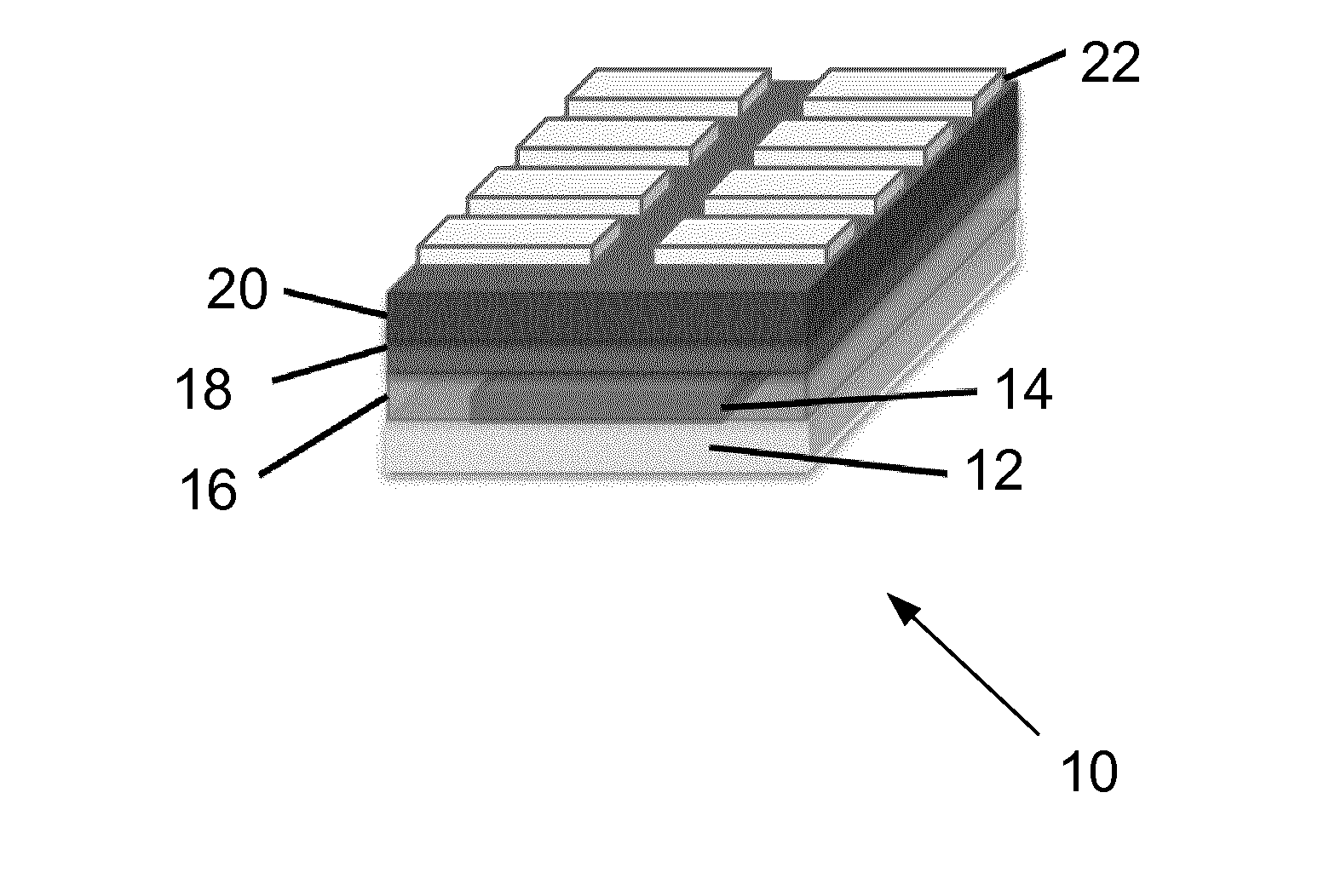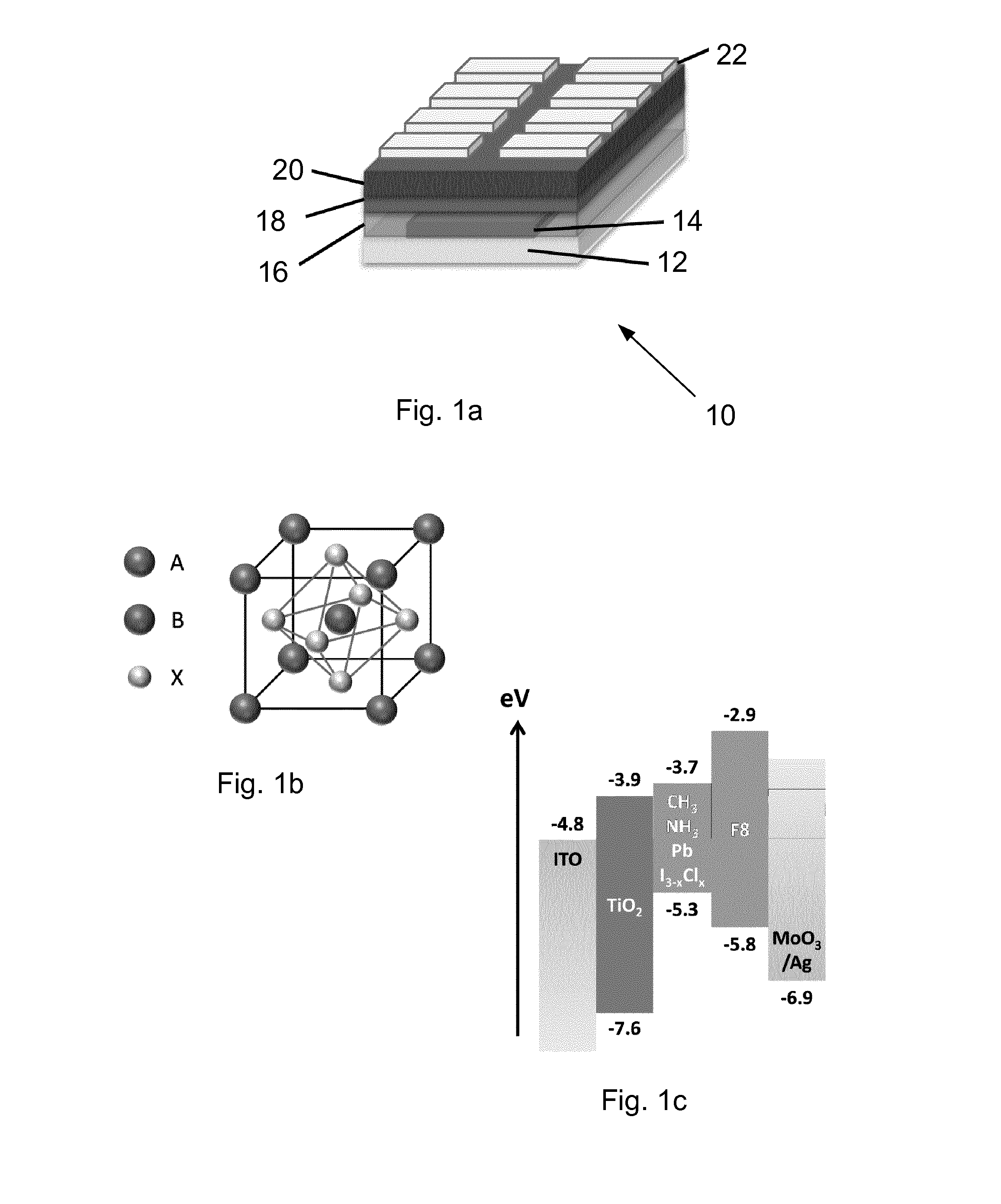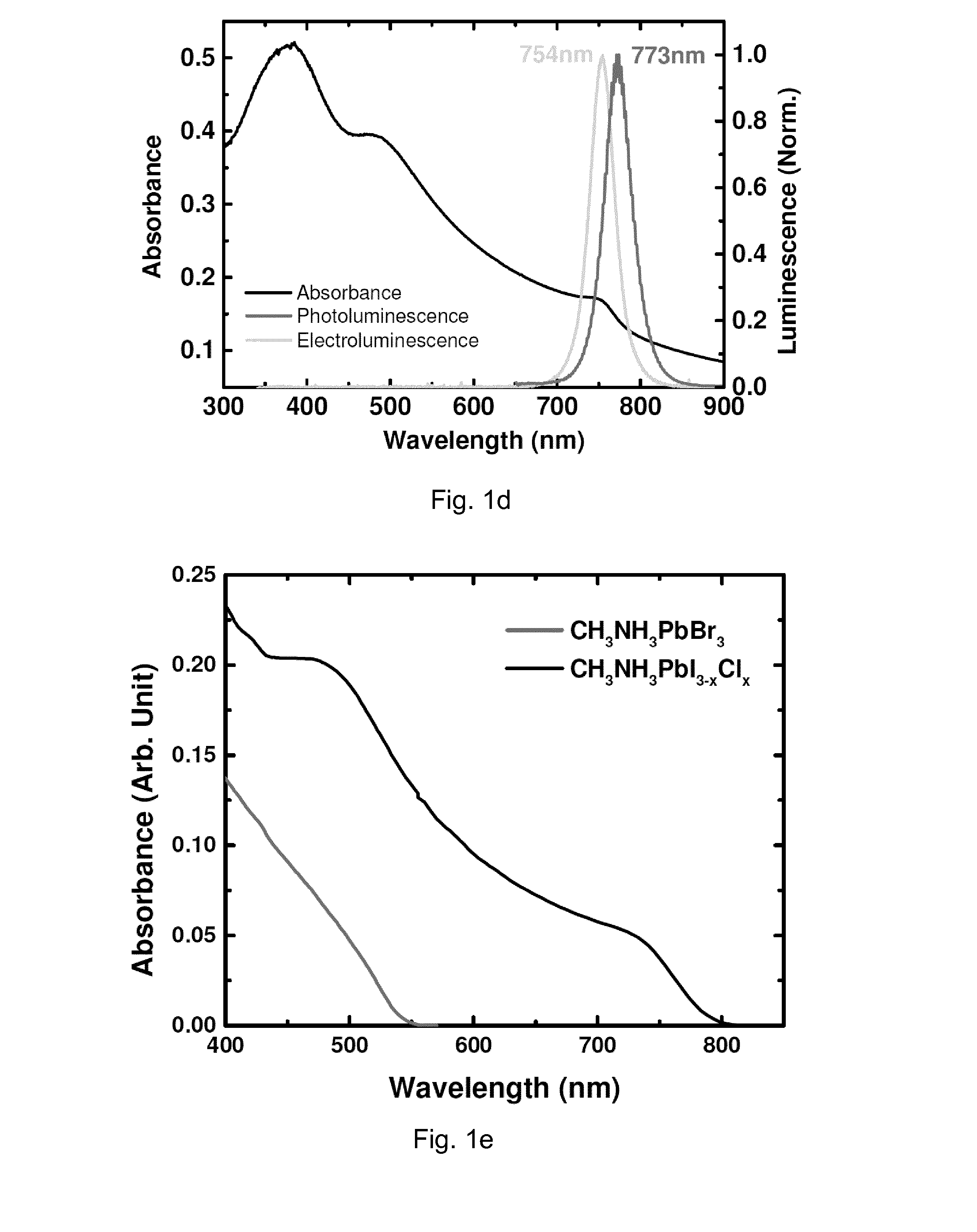Electroluminescent device
a technology of electron-hole capture and light-emitting diodes, which is applied in the direction of solid-state devices, semiconductor devices, photovoltaic energy generation, etc., can solve the problems of unpractical applications and uneconomical use of large-area displays, and achieve enhanced electron-hole capture, improved radiative recombination, and improved light-emitting
- Summary
- Abstract
- Description
- Claims
- Application Information
AI Technical Summary
Benefits of technology
Problems solved by technology
Method used
Image
Examples
example structure 1
[0095]FIG. 1a shows device architecture 10 according to an embodiment of the invention. The PeLED is fabricated on a transparent substrate 12, which may be a glass substrate. Generally speaking, the PeLED illustrated here comprises a first electrode 14 coupled to a first charge injecting layer 16, a second electrode 22 coupled to a second charge injecting layer 20, and an active layer 18 formed of an organometal halide perovskite material. The active layer 18 is sandwiched between the first and second charge injecting layers 16, 20. One or both of the charge injecting layers 16, 20 may be formed of a semiconductor material, such as titanium dioxide (TiO2). The active perovskite layer may be formed of CH3NH3PbI3-xClx perovskite. Advantageously, the double heterostructure architecture shown here enables the injected charges (holes and electrons) to be confined within the active (emissive) perovskite layer. This may be achieved by forming the PeLED using charge injecting layers 16, 20 ...
example structure 2
[0126]In order to demonstrate the application of organometal halide perovskite as visible light emitters, the larger bandgap CH3NH3PbBr3 perovskite material was used as a green emitter in a PeLED device of the present invention. Since a larger bandgap makes it more difficult to achieve electron injection from TiO2 into the perovskite conduction band, an inverted device structure (relative to that shown in FIG. 1a) was used.
[0127]FIG. 2a shows an example of an inverted device architecture 24. Here, the PeLED is fabricated on a transparent substrate 26, which may be a glass substrate. Generally speaking, the PeLED illustrated here comprises a first electrode 28 coupled to a first charge injecting layer 30, a second electrode 36 coupled to a second charge injecting layer 34, and an active layer 32 formed of an organometal halide perovskite material. The active layer 32 is sandwiched between the first and second charge injecting layers 30, 34. One or both of the charge injecting layers ...
example structure 3
[0136]FIG. 3a shows device architecture 38 according to an embodiment of the invention. The PeLED is fabricated on a transparent substrate 40, which may be a glass substrate. Generally speaking, the PeLED illustrated here comprises a first electrode 42 coupled to a charge injecting layer 44, a second electrode 50, and an active (emissive) layer 48 formed of an organometal halide perovskite material. The active layer 48 is provided between the charge injecting layer 44 and the second electrode 50. In this example device structure, the second electrode 50 directly injects charges into the active perovskite layer 48, and thus can be considered a charge injecting layer. The second electrode 50 may be formed from a conductive material such as Au. The charge injecting layer 44 may be formed from of a semiconductor material, such as titanium dioxide (TiO2) which injects electrons from the first electrode 44 (the anode) into the active perovskite layer. The active perovskite layer may be fo...
PUM
| Property | Measurement | Unit |
|---|---|---|
| thickness | aaaaa | aaaaa |
| thickness | aaaaa | aaaaa |
| thickness | aaaaa | aaaaa |
Abstract
Description
Claims
Application Information
 Login to View More
Login to View More - R&D
- Intellectual Property
- Life Sciences
- Materials
- Tech Scout
- Unparalleled Data Quality
- Higher Quality Content
- 60% Fewer Hallucinations
Browse by: Latest US Patents, China's latest patents, Technical Efficacy Thesaurus, Application Domain, Technology Topic, Popular Technical Reports.
© 2025 PatSnap. All rights reserved.Legal|Privacy policy|Modern Slavery Act Transparency Statement|Sitemap|About US| Contact US: help@patsnap.com



